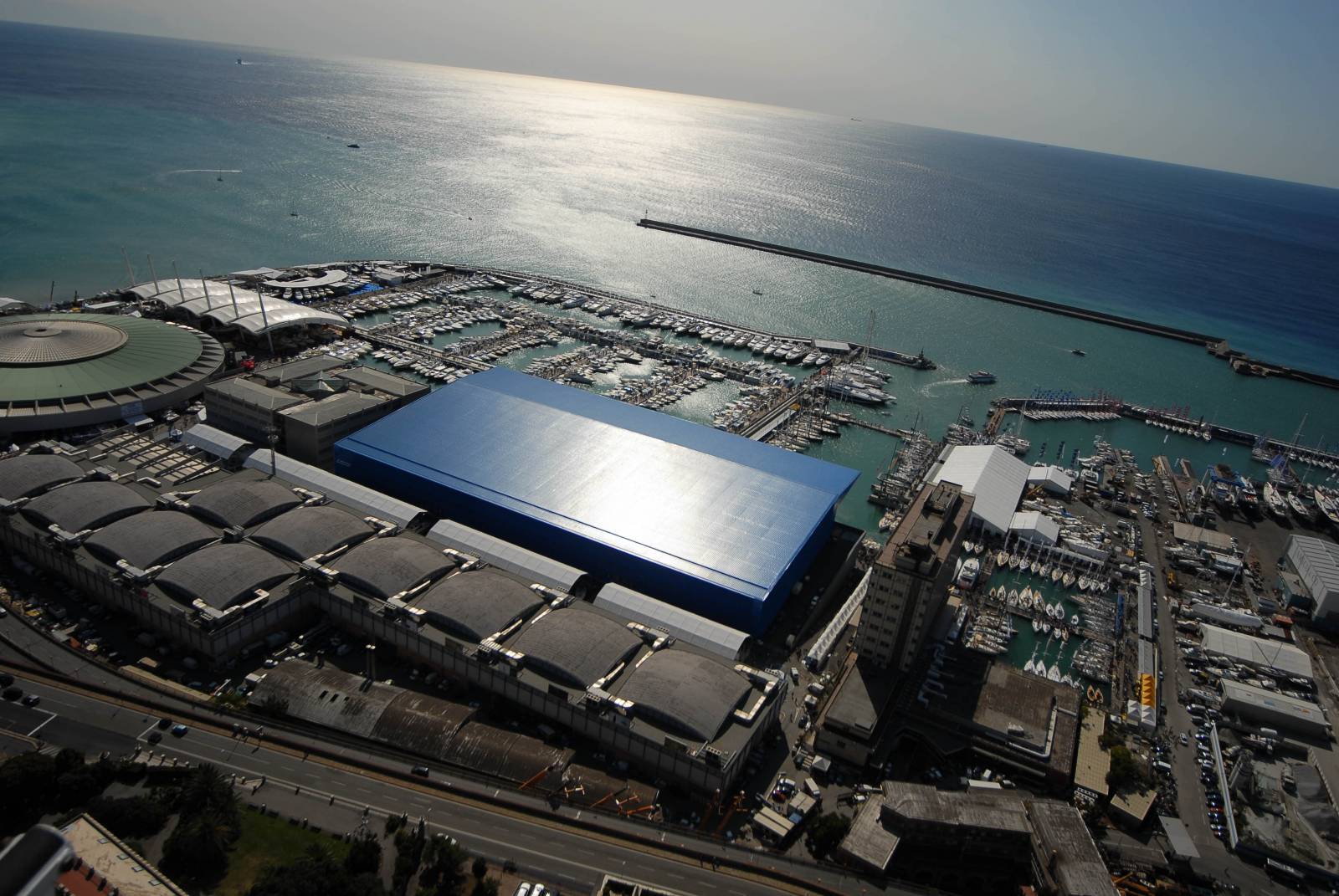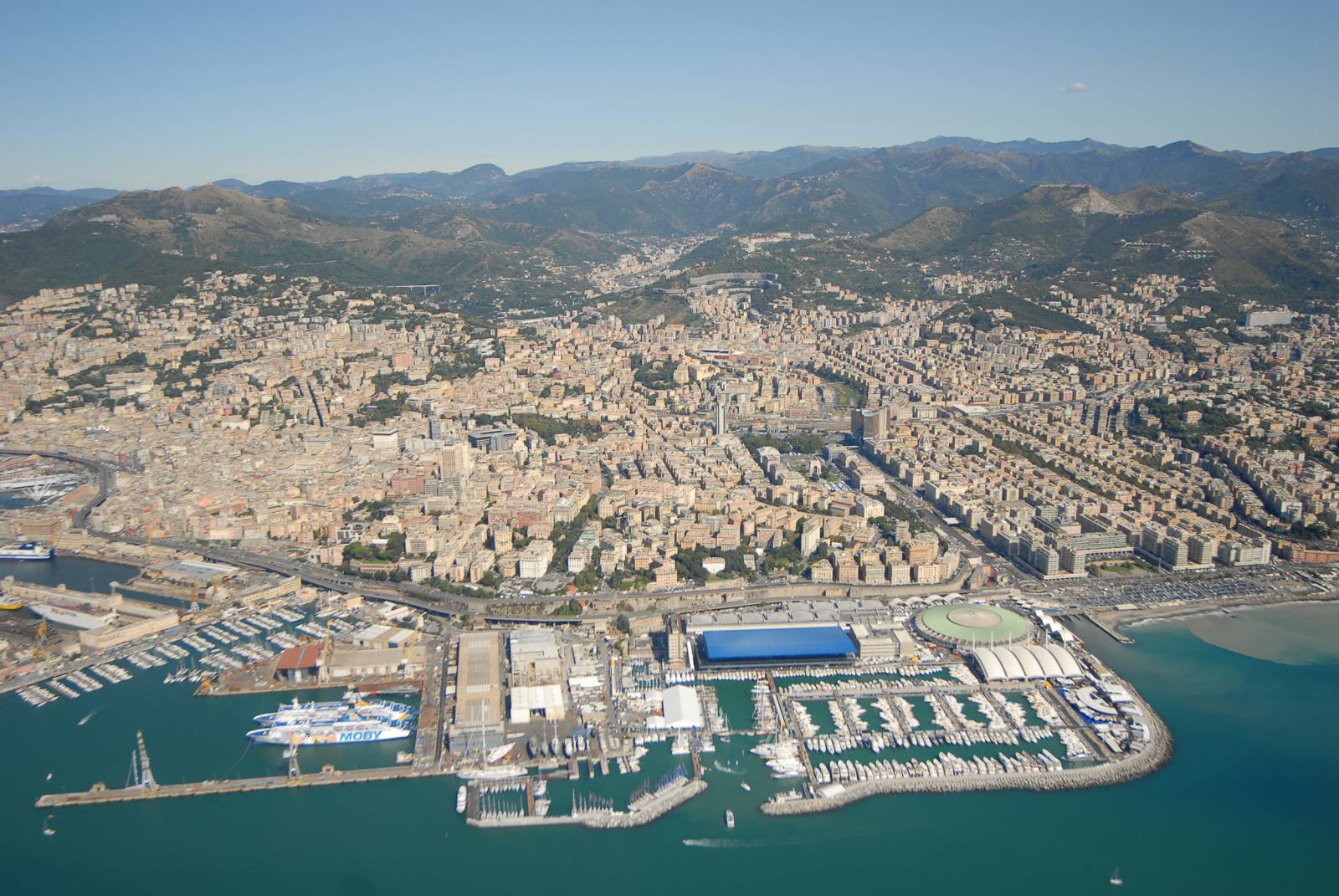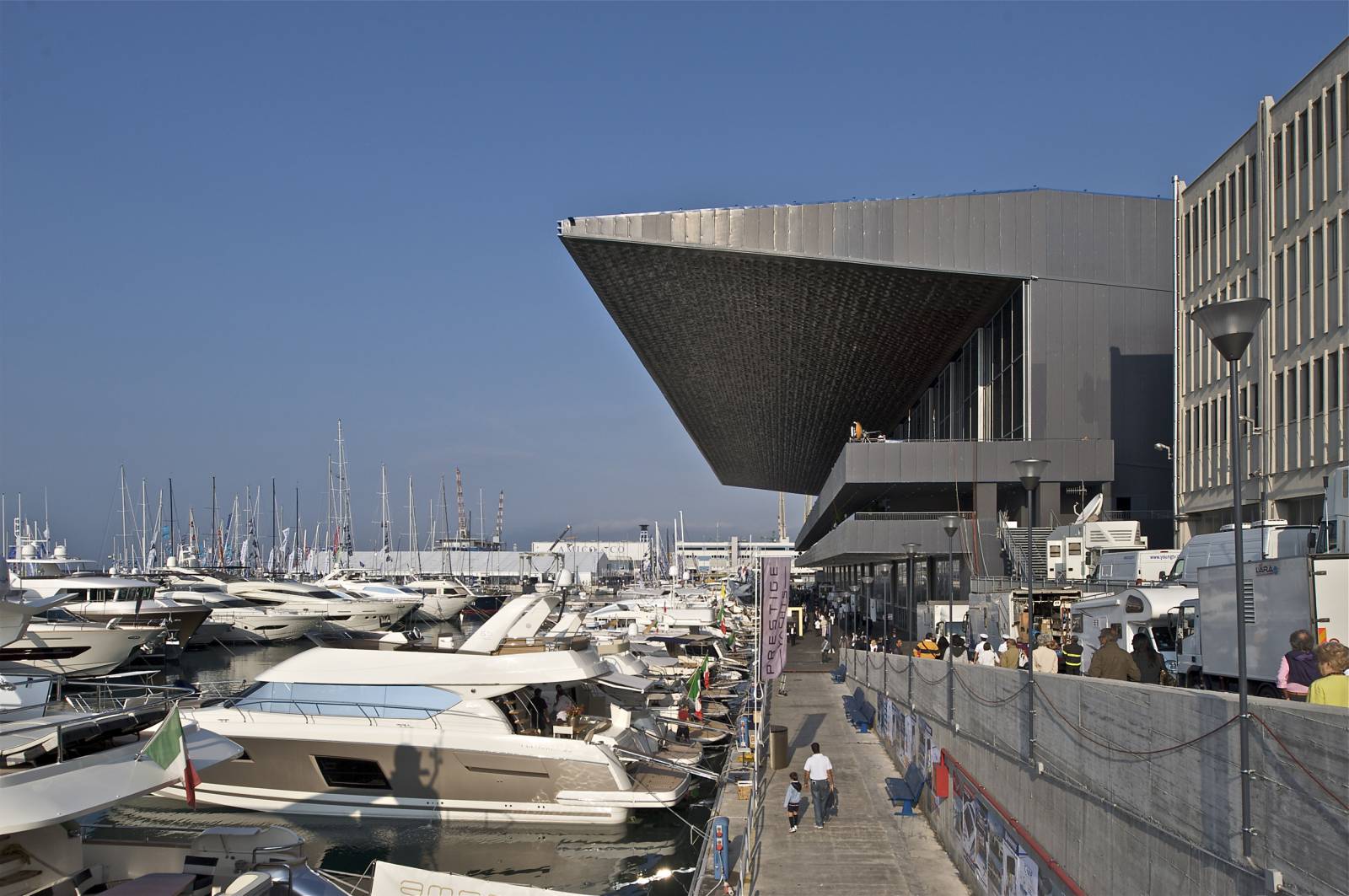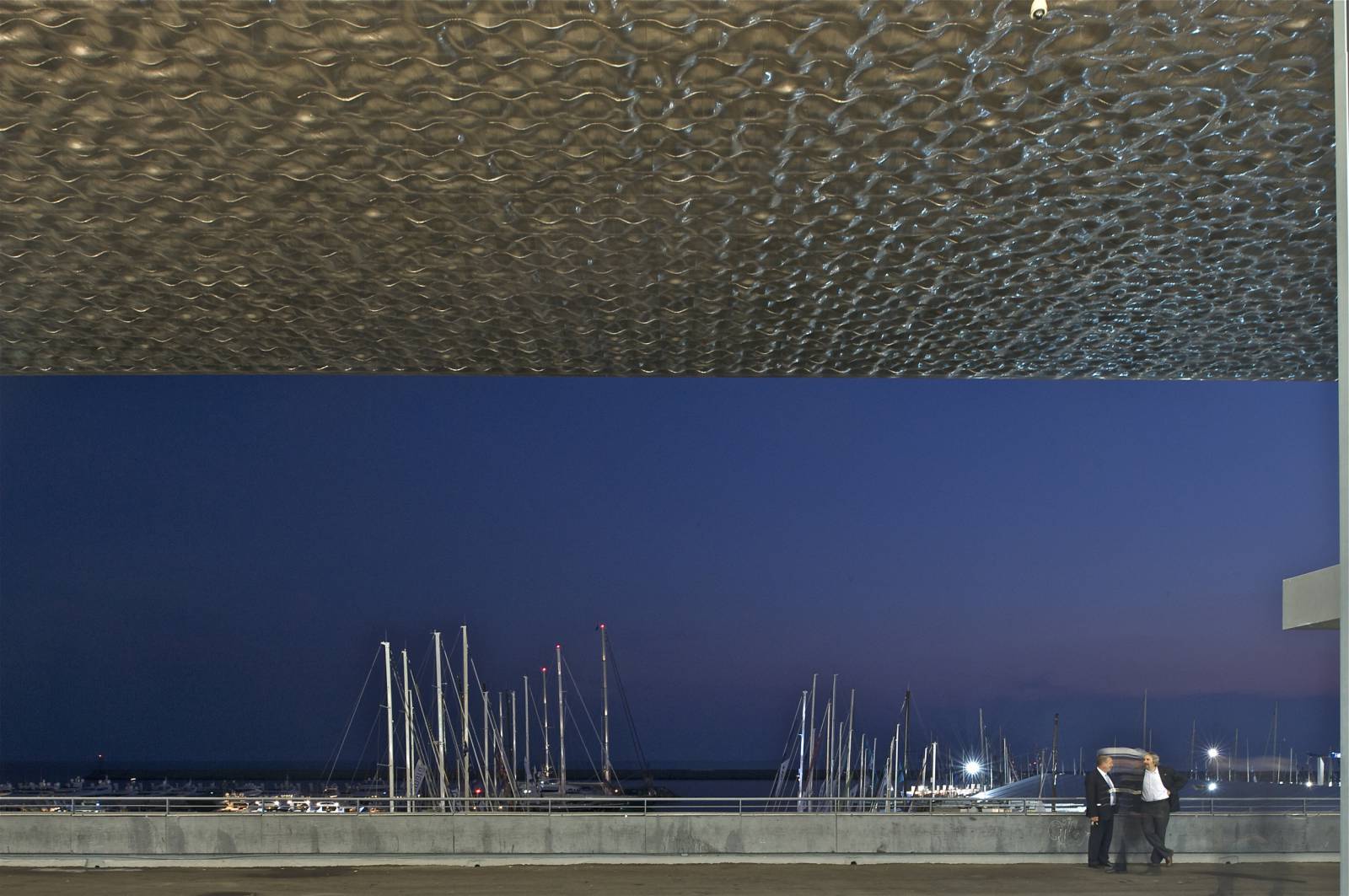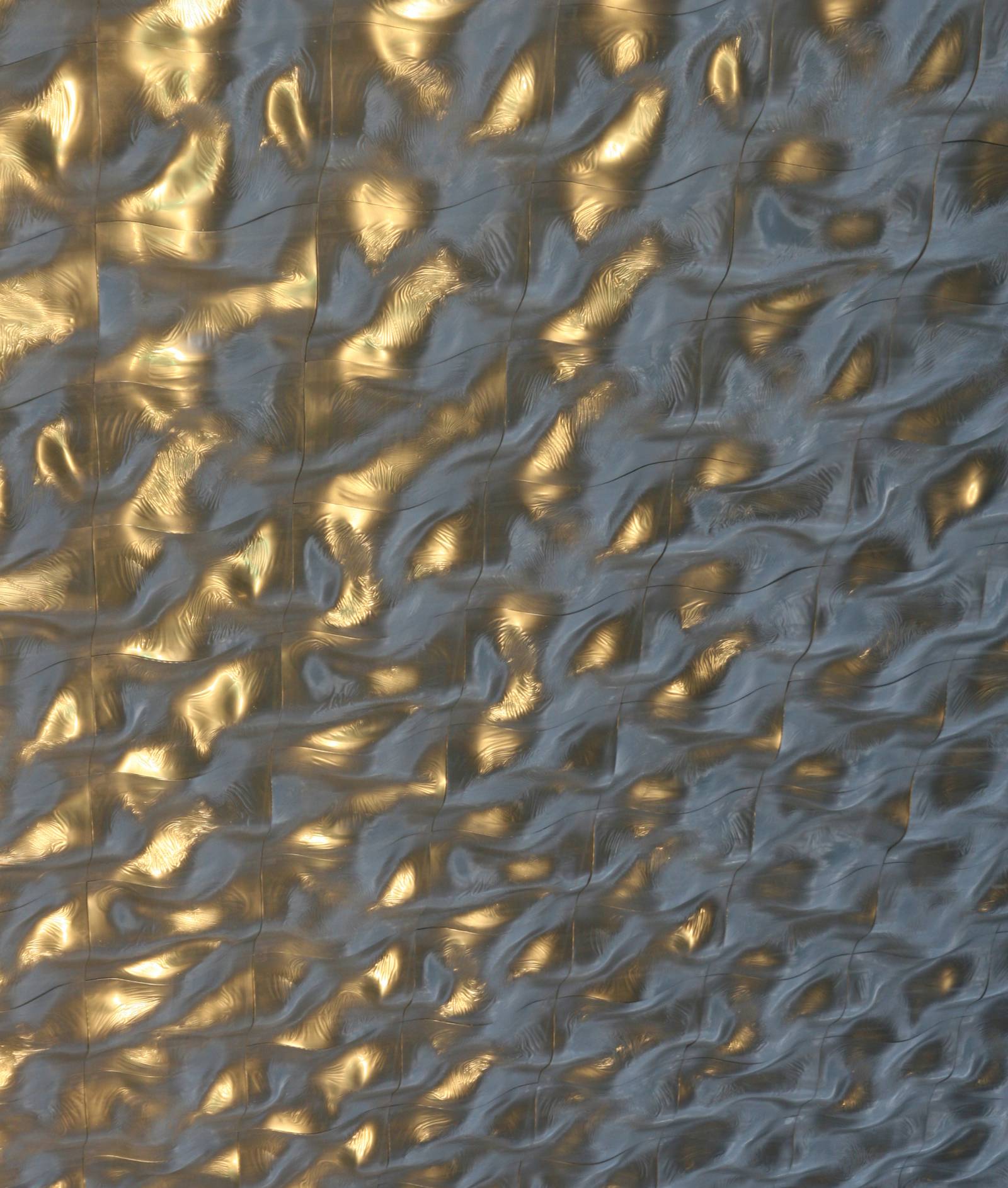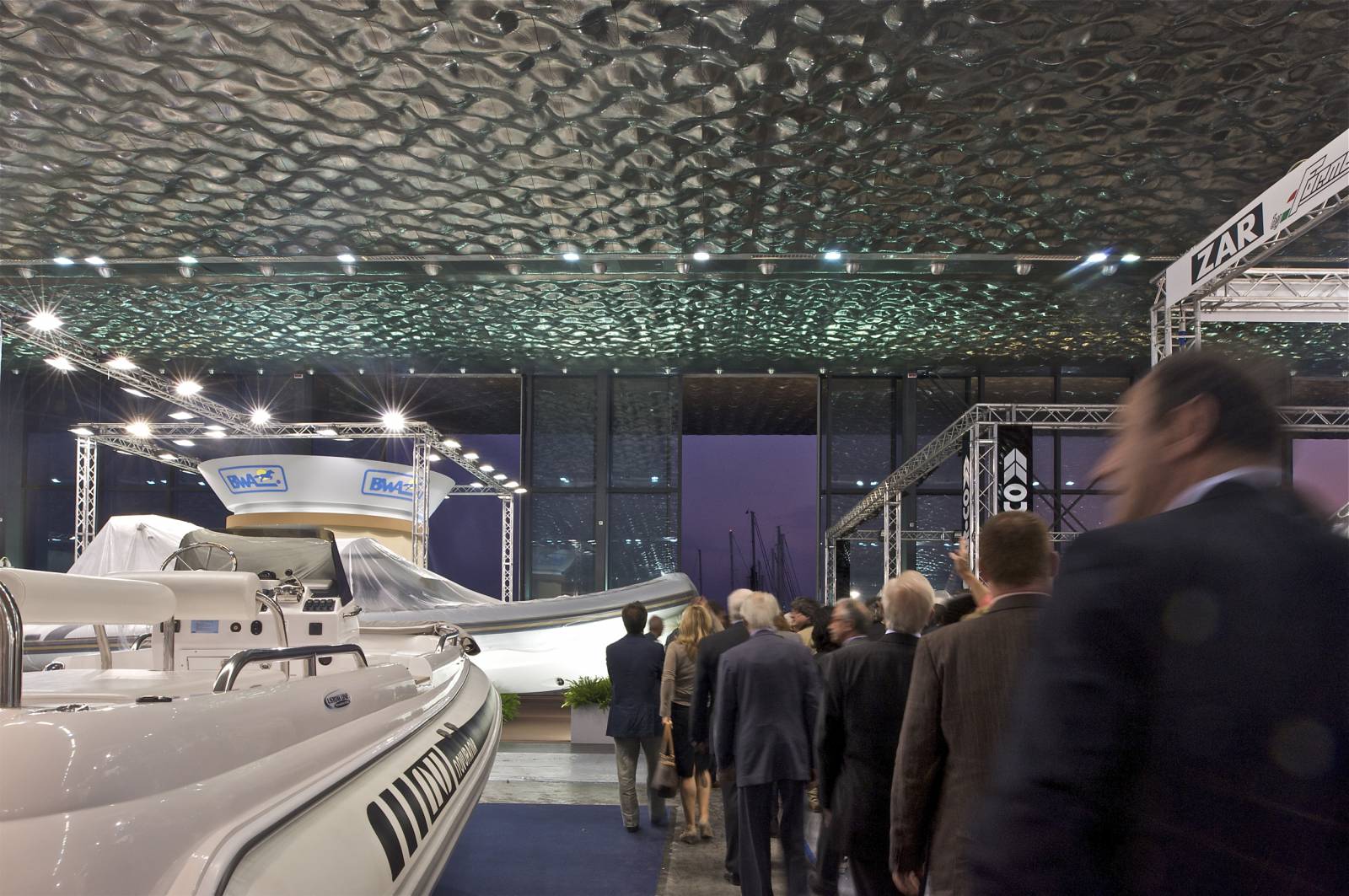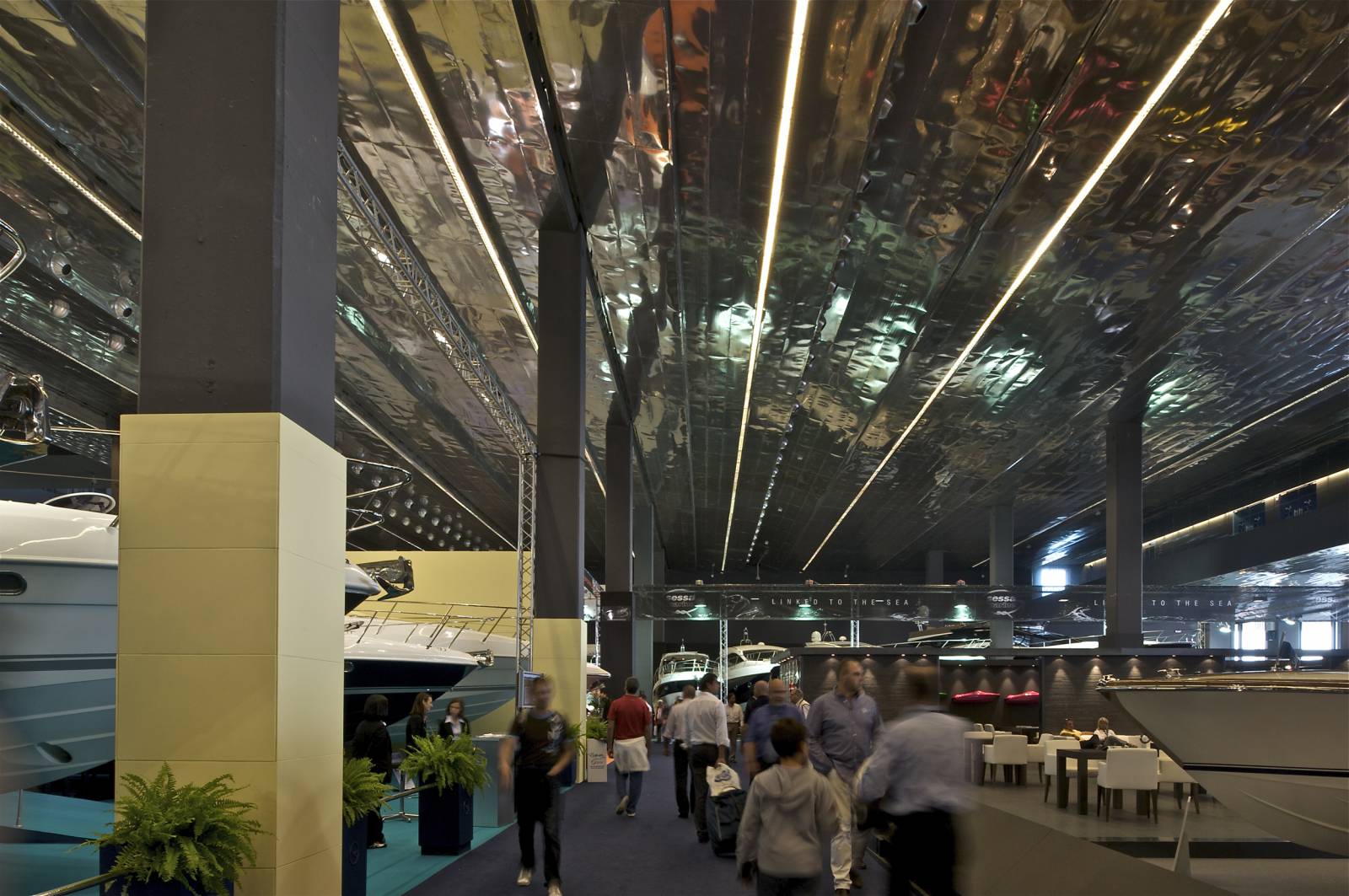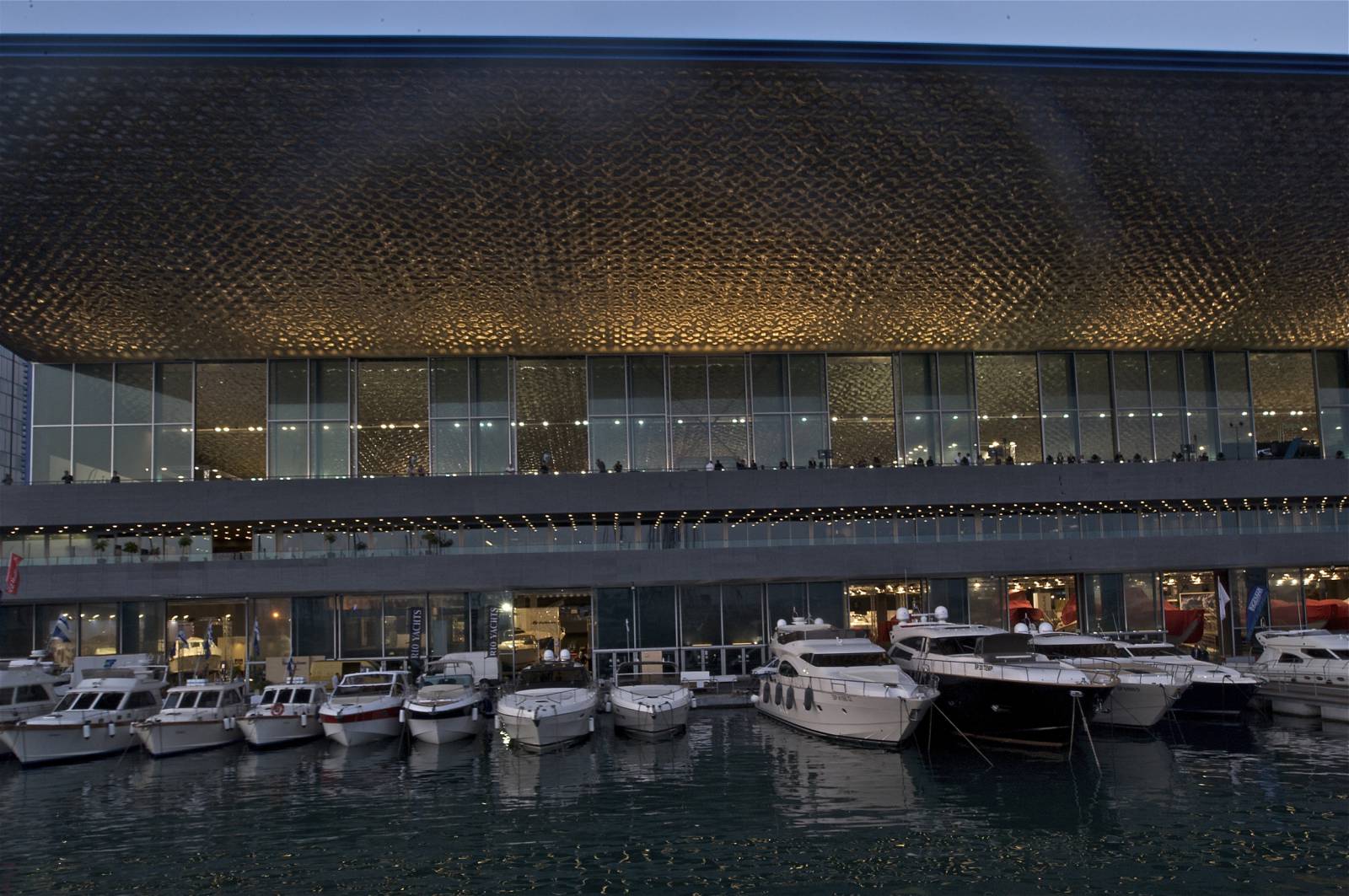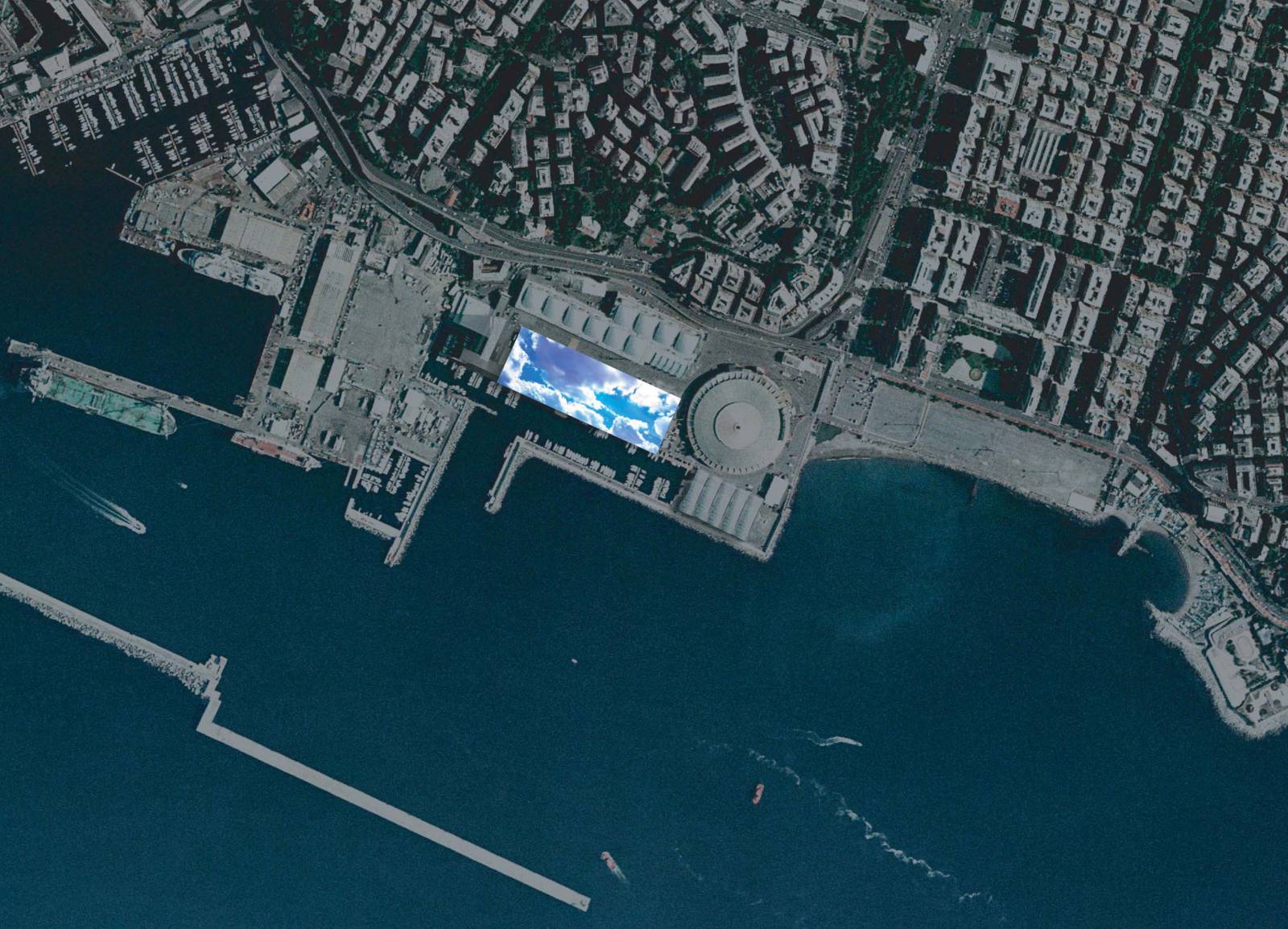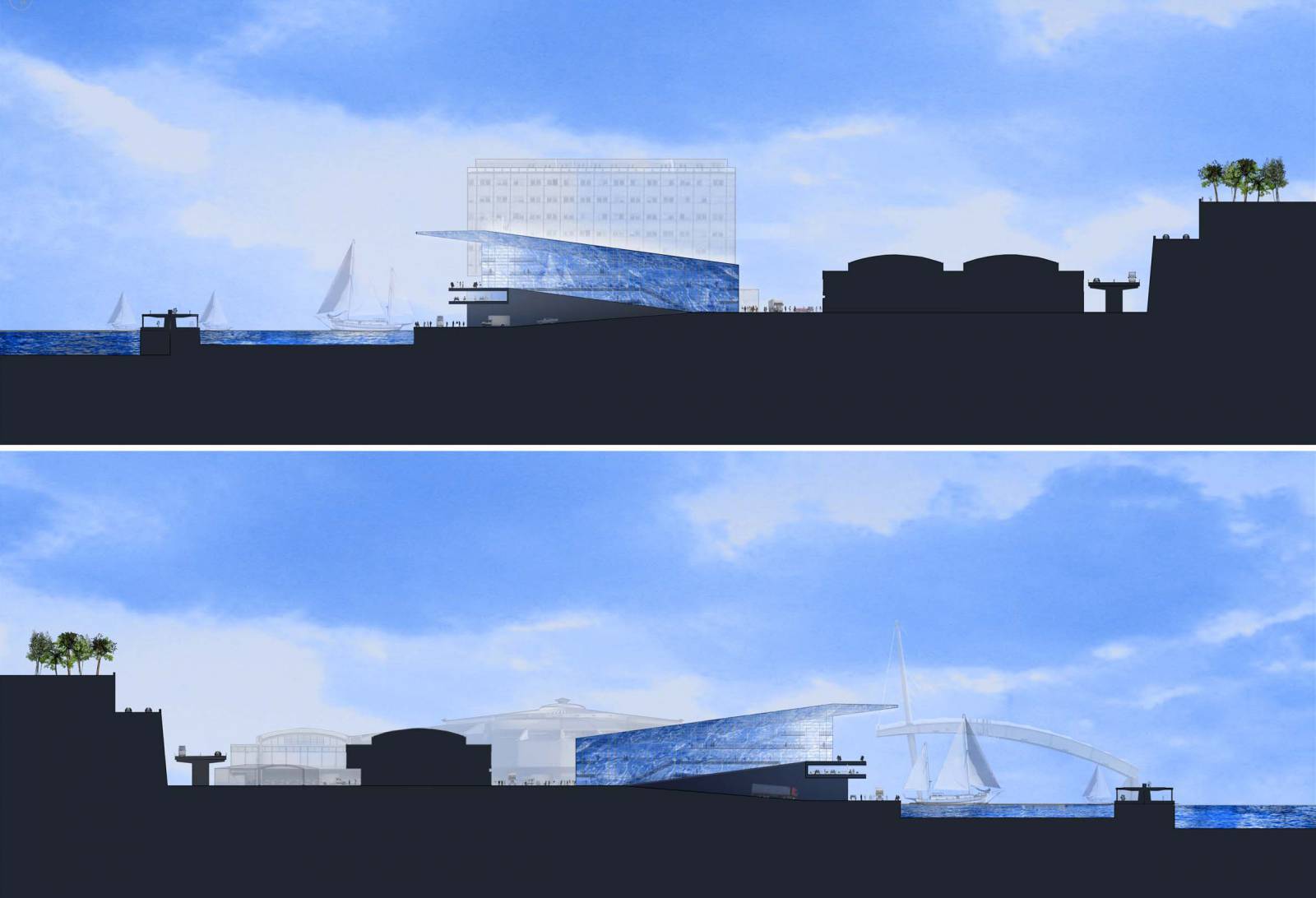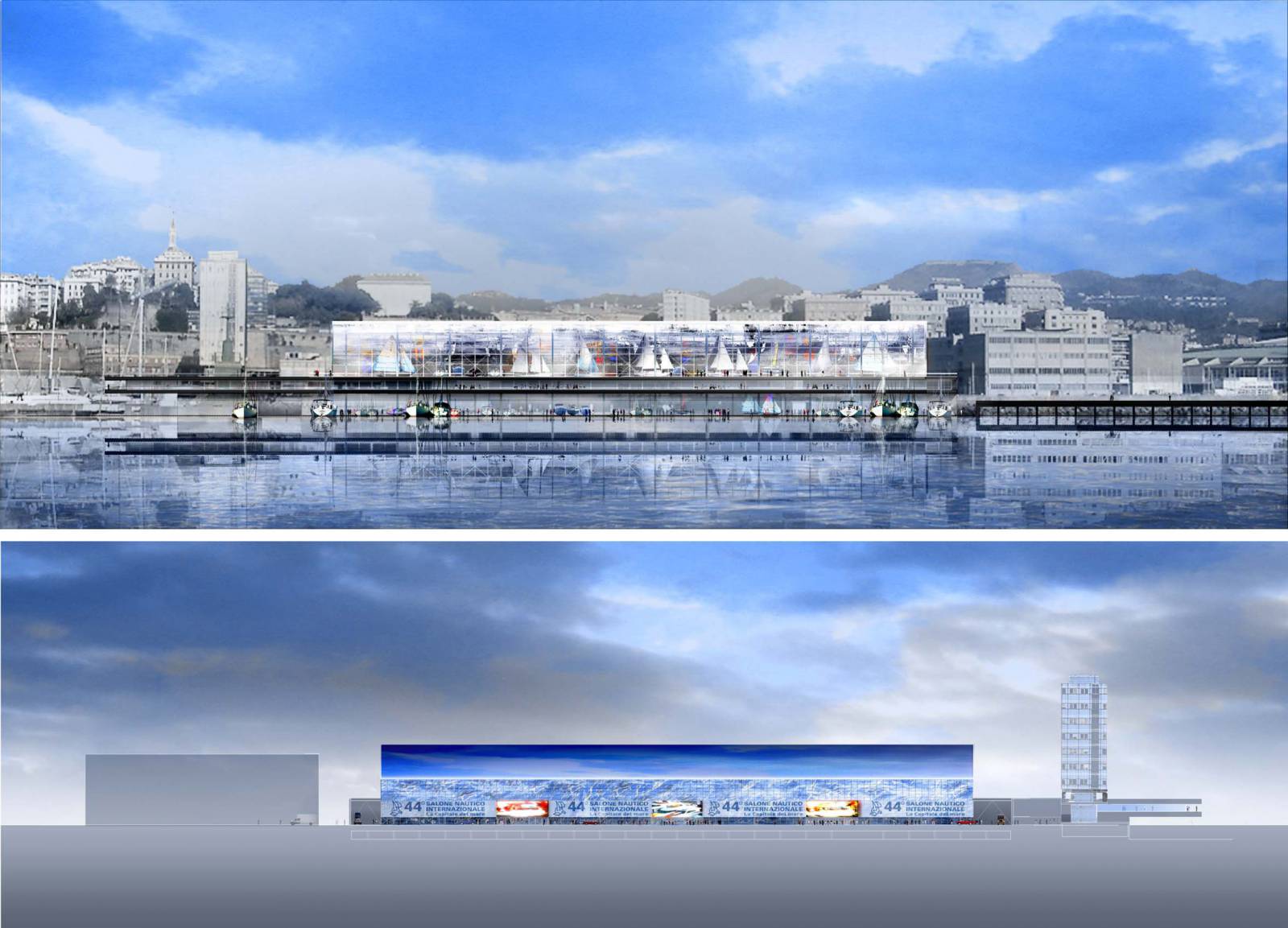Genoa Trade fair – Pavilion B
- Genoa, Italy
Motion Capture
It’s simple. Too simple to be so simple.
It’s first and foremost a plane, a blue plane, too blue, that sky blue of old underexposed photos or of early cinemascope. The plane is a roof. It can be seen from the city, from the road beside it, as an abstraction, an immense blue mirror in which the blue of the sky, or the gray of clouds which turn blue beneath the rain, is reflected. Clouds imprint their slow atmospheric movement on the mirror. On the inside it’s not much more complicated, at least not on first sight. Two exhibit halls open up to the sea. One, under the roof plane, is a covered terrace opening onto the port. The other is simply the extension of the quayside into the building; it also is open to the port. When I say open I mean entirely glazed, but also operable so that it be opened when wind and temperature conditions permit. Both halls are placed under great mirrors that evoke the surface of the sea. One is fashioned of bumps or wavelets like the waters of a port that lap at a dock. The other is fashioned of long sinusoidal waves parallel to the quay whose amplitude decreases as they approach the port. The mirrors diffract and re-form the image of the exhibits they cover and, to a lesser degree, the image of the boats in the port. The first mirror is like a kaleidoscope whose geometric nature has been perturbed by randomness. The second, with its parallel rhythm, stretches and deforms images like a car body or bumper.
Beneath the first mirror, light is provided by fixtures that are “plugged into” the floor. They never touch the ceiling. The second mirror is lit by floodlights hidden in the hollows of its waves or behind one-way mirrors. The two systems create a silvery, glistening effect like sunlight on the sea.
From the quayside, the exhibitions create a double spectacle of multicoloured, moving reflections. The restaurant stretches along the limit between the port and the exhibit halls and enjoys a view, depending on which direction one looks in, of the serenely moored boats in the port, or of the animation in the exhibit hall.
This is a story about questioning, about the destruction of material, a story of high-class optical games, of delicious torments for the eyes on the scale of a city. These sensations are put in the service of making exhibit halls into attractive, prestigious places, for they, too, should love a show.
Jean Nouvel
